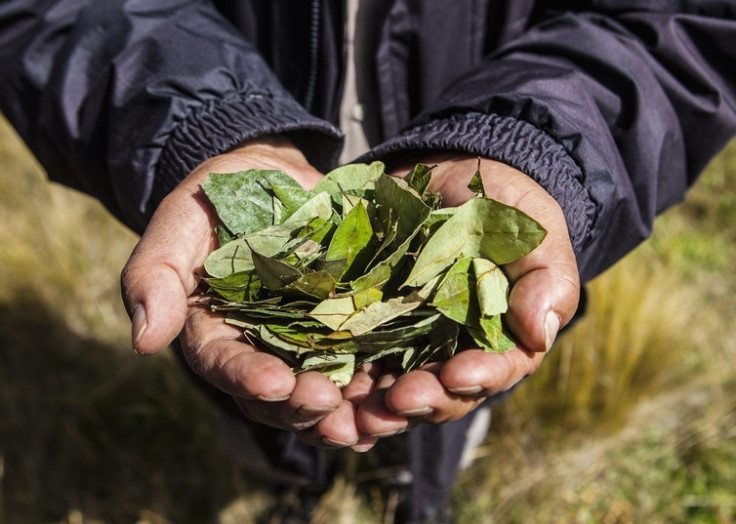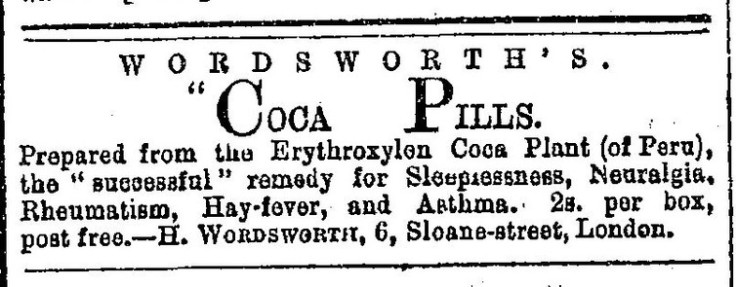Victorian athletes doped up by chewing leaves containing cocaine
Inspired by one long distance walker's performance, many experimented with coca tonics.

The American sprinter Justin Gatlin's recent victory over Usain Bolt at the World Athletics Championships has brought the storied issue of sports doping back into the public eye.
Gatlin has been subject to drug bans twice in his career – first in 2001 (though this was reduced on appeal) and again in 2006. Bolt, by contrast, has become a figurehead for clean competition over his 13 years in professional athletics. The fact that Gatlin beat Bolt to the 100m gold medal in the last race of Bolt's career was met with enraged boos from the crowd. The event has become a lightning rod for the anger that surrounds doping in professional athletics.
Discussions of Gatlin in particular and of performance-enhancing drugs in general tend to be suffused with a rhetoric of criminality and disease. Doping as a "cancer" within sport is a common image. Both Lord Coe (President of the IAAF) and Dame Jessica Ennis-Hill have called for lifetime bans for dopers. Even Usain Bolt, in defending Gatlin's return, referred to him as having "done his time". Modern perceptions of doping are almost entirely predicated on ideas of corruption, immorality, and crime.
Yet this was not the case in Victorian Britain. The crowd and commentators in London who jeered Gatlin might have been surprised by the very different reaction that their forebears had in 1876 to another American sporting celebrity and his use of performance enhancing drugs.
Edward Weston was a famous long-distance walker who came to Britain in January 1876 to compete in a series of pedestrian races and tests of endurance. In America, Weston had made a habit of getting free publicity by inviting medical specialists to oversee his races and test how his body reacted to extreme stress and exertion. In London, Weston did the same thing, and issued invitations to correspondents from The Lancet and the British Medical Journal.
But these invitations had an unexpected consequence. In March 1876, during an attempt to walk 500 miles in six days, one observer, John Ashburton Thompson, noticed that Weston had spent at least part of the event chewing coca leaves (the source of cocaine) to improve his stamina and recovery time. Thompson conscientiously published this fact in the BMJ. Interestingly, in breaking the news, Thompson was at pains to point out that Weston's sporting integrity was in no way compromised by his drug use:
There is no reason why Mr Weston should not take advantage of every aid which his superior knowledge places at his disposal. Already he is clothed, fed, and tended in such a scientific manner as leaves little room for improvement. There is nothing nefarious about the use of coca under the present circumstances; nor, I presume, would any person attribute all Mr Weston's powers to some drug suddenly introduced into his system. Could they persuade themselves to do so, his mental powers – his foresight, his energy, his perseverance – would still remain to be accounted for. These are natural qualities of Mr Weston's mind, which he has cultivated to the best advantage.

From a modern perspective, the reaction to Weston's coca-chewing seems entirely counter-intuitive. Rather than anger of the kind directed at Gatlin, Weston's use of the "performance-enhancing" coca was met with interested approval. What little controversy there was centred not on the morality of Weston's actions, but on how his drug use was likely to affect the results of the physiological investigations the doctors had been conducting. Most significantly, no Victorian commentator seriously suggested that Weston might have been cheating by taking drugs.
'Marvellous properties'
The Glasgow Herald wrote that the use of coca was "very interesting" and that the drug was likely to have many "popular applications". The Telegraph enthused:
The coca leaf is a plant to which scientific men cannot too soon turn their attention.
Inspired by Weston's performance, many began to experiment with cocaine and coca tonics. One doctor and sports enthusiast wrote to The Lancet that the drug was destined to "be hailed as a boon by many a brother sportsman". Amidst the excitement, the Northern Echo reminded its readers that there was more to Weston's success than just coca: whatever its "marvellous properties, the mere chewing of the leaf will not make a counter-jumper a Weston".
So why were Victorian observers so willing both to overlook Weston's coca use, and to embrace performance enhancing drugs themselves? The answer can be seen in how Weston's sporting performance was constructed at the time. Thompson's descriptions in the BMJ placed coca alongside other "preparations" and "superior knowledge" that Weston used: his clothing, the design of his boots, his diet, and the unique gait he adopted to minimise exertion over hundreds of miles of walking. Coca was folded into Weston's regimen of training and specialised understanding of his sport.

More broadly, as a professional athlete, Weston's achievements were seen as the result of a constellation of factors: his bodily strength, his sporting expertise, and the "indomitable pluck and determination" of his character. This was why coca alone would "not make a counter-jumper a Weston". Sporting performance was seen as the expression of an athlete's entire (multi-faceted) selfhood. It was, as The Lancet wrote, "essentially a personal feat".
Victorian opinion held that doping was necessarily secondary to the character of the sportsman. As the doping debate continues, this change in attitudes between 1876 and 2017 highlights how subjective our apparently fixed ideas about performance enhancement – and sporting performance itself – really are.
Douglas Small, Wellcome Trust Research Fellow, University of Glasgow
This article was originally published on The Conversation. Read the original article.
© Copyright IBTimes 2025. All rights reserved.




















